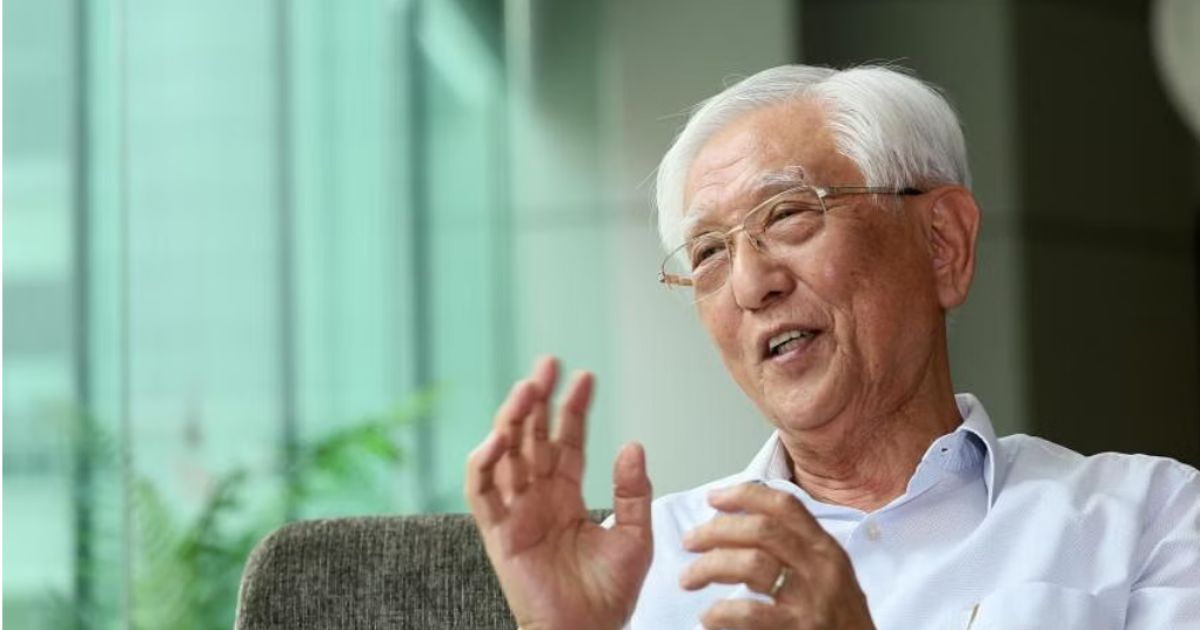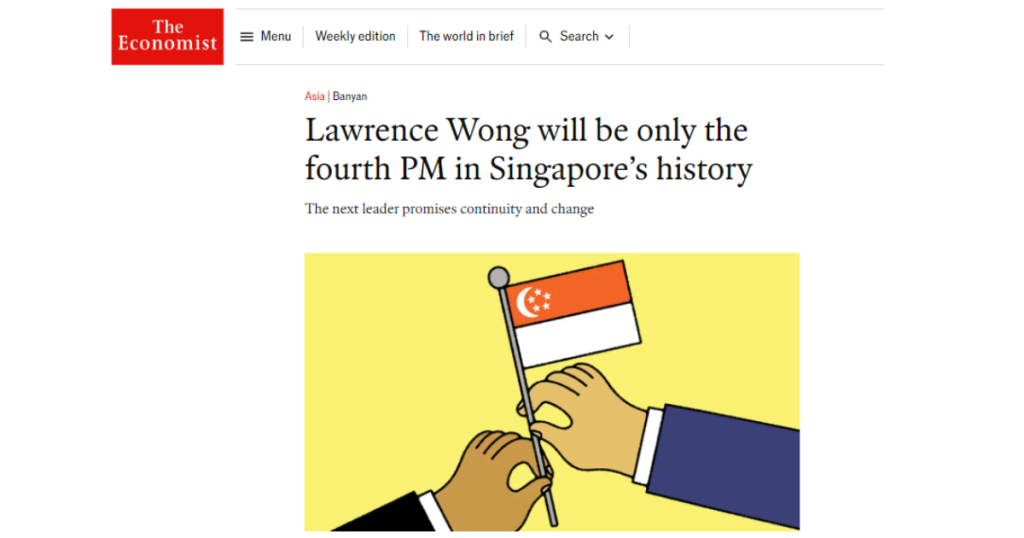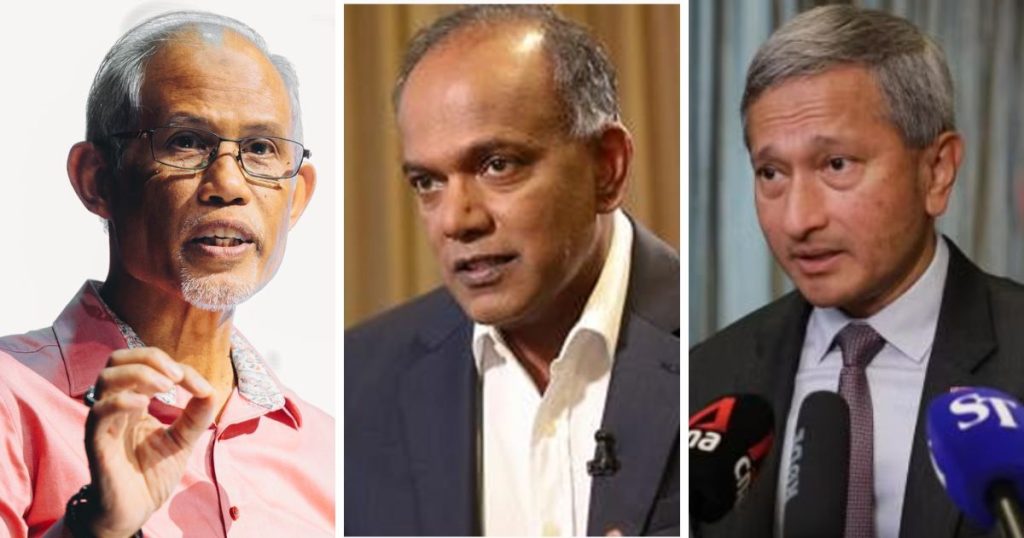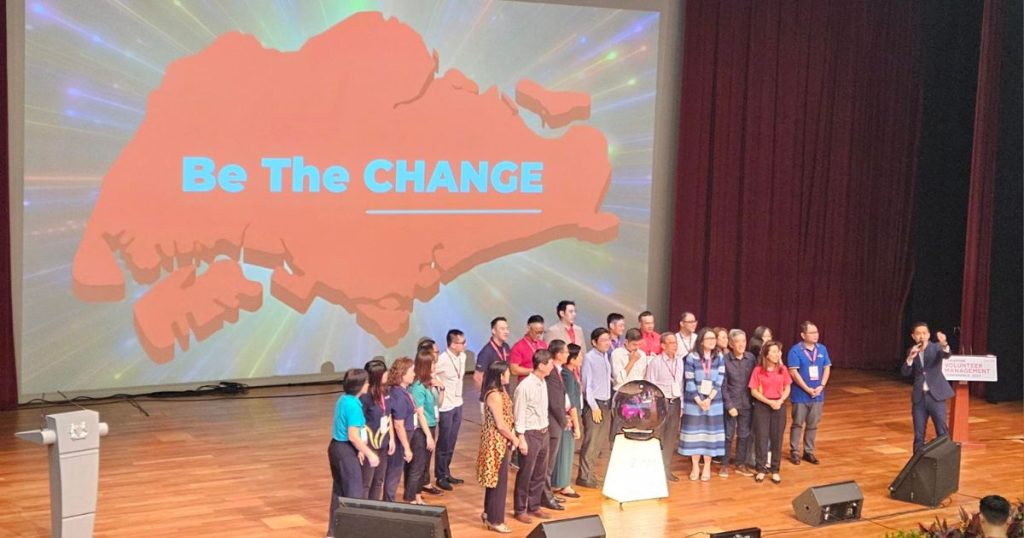PAP stalwart and former Senior Minister of State Ch’ng Jit Koon passed away on March 1 at the age of 90. This is a special tribute from Dr Shashi Jayakumar, a private sector consultant and author of A History of the People’s Action Party. Mr Ch’ng, better known as Mr Fix-it, was the epitome of an upstanding gentleman, and one who made significant contributions to the Party and the nation.
By Shashi Jayakumar
IN the course of researching for my book on the history of the People’s Action Party, I interviewed the late Mr Ch’ng Jit Koon in 2012. I came away with this impression: here was a man so ready to talk about the contributions of others, but very reticent about himself. It was only during the past few weeks since Mr Ch’ng’s passing on March 1, 2024, after talking to activists, cadres, hawkers, and old grassroots members who knew him and mourn his loss, that I came to a fuller appreciation of this stalwart of the PAP.
Humble upbringing
Ch’ng Jit Koon was born in 1934 in Hui An County near Quanzhou City, China. His parents brought him to Singapore when he was around one year old. His father initially worked as a construction labourer but over time became an assistant manager at a company that employed rickshaw pullers.
Although the family escaped the worst during the Japanese occupation, Ch’ng had a narrow escape himself. At one point, it seemed he might be drafted as a labourer for the Japanese army, which could have resulted in him being sent to the Death Railway. A neighbour’s friend who worked at a soap factory got wind of this and managed to get him a work pass, which placed him as an odd-job worker at the factory under military administration. That saved him from being drafted.
Ch’ng’s father contracted tuberculosis in 1939 and struggled with the disease until his death in 1951. At 17 years old and the eldest in his family, Ch’ng decided not to continue with his school to help the family make ends meet. He had in fact thrown his books away after leaving secondary school. However, when Nantah was being established and made known that it would accept individuals who did not finish formal education, Ch’ng took their qualifying examination and was selected, successfully enrolling in 1955. He chose to study political science partly because the course had no afternoon classes (which is when he needed to work).
Politics

Ch’ng was not particularly active in political circles at Nantah. He did, however, become drawn into Progressive Party’s Thio Chan Bee’s campaign for a seat in the 1955 Legislative Assembly. Thio campaigned on a platform for greater Chinese representation in government. Although Ch’ng initially supported Thio’s campaign, he found he could not get along with the left-wing students backing Thio. His friend, a bank employees’ union member, suggested helping the PAP instead. Since Devan Nair, the union’s advisor at the time, was contesting the Farrer Park seat (in the end unsuccessfully), they ended up going to Farrer Park. This marked the beginning of Ch’ng’s involvement with the PAP.
Following his involvement in the 1955 campaign, Ch’ng now had less time on his hands. He started school and needed to work. Having attained internal self-governance, he felt progress had already been made politically in Singapore. He likely would have left politics altogether at that point had a friend not introduced him to PAP candidate Lee Teck Him contesting in Tiong Bahru in 1960. As the position of branch secretary was vacant then, Ch’ng filled it. But he mainly did administrative work initially due to existing work commitments.
Ch’ng briefly joined the PAP campaign for the 1961 Anson by-election (which saw David Marshall beat PAP candidate Mahmud bin Awang). As branch secretary for Tiong Bahru, he spent more time there and had a ringside seat of the schism within the Party. Some cadres (including Lee Siew Choh) wanted to sway him to the nascent Barisan Sosialis. However, not for the first time, he felt that some individuals were not the serious types he could get along with.
Having stabilised Tiong Bahru and ensured it would not fall to Barisan, Ch’ng left his post as secretary in early 1962 due to existing commitments. But he was soon drawn back in – eventually persuaded to return to help sort out issues at Tiong Bahru branch which had fallen into disorganisation.
The party leadership thus knew he was a reliable man of sound judgement, with a good grassroots touch, even before he was fielded as a candidate in 1968 for Tiong Bahru. In fact, a year earlier in 1967, Ch’ng represented Singapore at the United Nations General Assembly along with S R Nathan. (Much later in life, Nathan would send Ch’ng a calligraphy scroll with the word “friend” and both their names, in a touching gesture marking their friendship).
Contributions to Party
While Ch’ng served as the MP for Tiong Bahru for over 28 years from 1968 to 1991, and then Bukit Merah from 1991 to 1996, his contributions often went unsung and he rarely talked about his own role.
Ch’ng was one of the few who realised in the late 1970s and early 1980s, when the PAP seemed dominant, that the party needed to be revitalised. He was part of an internal PAP task force formed in 1983 to do this. Key people involved in conceptualising this task force were Goh Chok Tong and Ch’ng, then Senior Parliamentary Secretary in the Prime Minister’s Office. Ch’ng proposed the draft concept for the task force and sent it to Prime Minister Lee. When the task force was formalised in 1985 as the “HQ Exco” within the PAP Headquarters, Ch’ng became one of the core members of the HQ Exco committee.
Personally trusted by Party leadership

Ch’ng remained in the Central Executive Committee continuously from 1982 to 1999, even though he retired from politics in 1996.
Ch’ng accepted the idea of renewal, a source of friction within the Party. He was present at a seminal moment in the Party’s history in 1984 when a core group of 2G leadership team and younger future leaders like Lee Hsien Loong met at Tony Tan’s home on Dec 30 to decide the next leader after PM Lee.
PM Lee promoted Ch’ng to Senior Parliamentary Secretary in 1982, partly to mentor newer Members of Parliament and show younger office holders the ropes. The promotion at a time when many older guards were being phased out suggests PM Lee felt Ch’ng could help with national interests, and Ch’ng did so. Even before then, Ch’ng was an important liaison between Chinese clan associations and younger Ministers like Ong Teng Cheong tasked with engaging the Chinese ground since the late 1970s.
A cautious man, Ch’ng was careful in word and deeds, and sober in judgement. He would refrain from commenting until he was conversant with the facts. This also helped him gain PM Lee Kuan Yew’s trust. (Ch’ng never drew attention to his links with PM Lee or to the higher echelons of Party leadership).
“Silent Majority”; belief in multiracialism

Ch’ng had strong links with the Chinese-speaking community, which were well-known1. He played an important role articulating the views and concerns of the “silent majority” – the more conservative sections of the Chinese public. This part of the community had different concerns and preoccupations compared to the English-educated. In 1992, Ch’ng observed that feedback from the Citizens’ Consultative Committees (as opposed to Feedback Unit) “covered the silent majority and formed a welcome ballast to “the weight of the vocal minority”.
When PM Goh called a snap election in 1991, losing four seats seemed a blow to the PAP. The result suggested some loss of support from the silent majority. Notably, Ch’ng sat on the election postmortem committee.
However, Ch’ng never saw himself as representing these interests alone.
S. Chandra Das contested the 1984 general election in Chong Boon. He and other PAP leaders believed the Singapore Democratic Party was pushing across racial lines at the edges of its campaign. Two days earlier, Chandra Das held a rally dominated by the best Chinese speakers in the Party, including Ch’ng who normally did not speak at rallies. To this day, Chandra Das believes this (Ch’ng, together with others speaking) swung the result (his narrow victory over Ling How Doong).
In the 1960s, Malay staff members’ children at Singapore General Hospital would play football at the nearby Medical College field. Ch’ng and grassroots leaders arranged for them to get proper kits and later form the nucleus of a team representing Tiong Bahru Constituency. This team went on to become a serious force in the Singapore League, with all celebrating their wins regardless of race. This laid the foundations of the Tiong Bahru Constituency Sports Club which later became the Tanjong Pagar Football Club in the S-League.
Separately, PM Lee Kuan Yew realised in the 1970s that some non-Chinese MPs had some difficulty in holding the ground, so he proposed pairing one non-Chinese MP with a nearby Chinese MP. The MPs could then work together to serve the needs of constituents from both groups. Ch’ng readily agreed. He was paired with N. Govindasamy in the nearby Telok Blangah constituency. One can partly trace Mr Lee Kuan Yew’s thinking behind the group representation constituency concept (which of course had other aspects) to this idea.
Helping those in need

During my research for the book on PAP history and speaking to cadres and activists who knew Ch’ng since his passing, it is striking that Ch’ng was the go-to person called on to delicately handle tricky municipal and political issues. He intervened and followed up on extremely sensitive matters in his customary polite and tactful manner.
Ch’ng was known as the Mr Fix-it for the greater Tanjong Pagar area (Tiong Bahru, Bukit Merah, Tanjong Pagar and Radin Mas). When another PAP MP, P. Govindasamy, died unexpectedly from a heart attack at age 67 in 1978, Lee asked Ch’ng to help look after his own constituency of Tanjong Pagar (Govindasamy had previously been doing this). Ch’ng agreed.
This selfless quality was recognised by Lee in 1979, when he praised Ch’ng directly and unusually. Lee said, “Ch’ng Jit Koon is one of the outstanding MPs. He takes good care of his constituents. He is reliable, patient, hardworking, and humble. He gets people to work with him and thus get things better done. He helps to get problems attended to… By temperament and character, he gets team spirit generated amongst civic-minded activists and get them on co-operative ventures”.
As then-PM Lee observed, Ch’ng’s diffidence meant he sometimes declined extra responsibility. For example, in the late 1970s, when Devan Nair wanted Ch’ng to look after Anson while he was away, he declined. However, in 1981 , when Devan vacated the seat to become president before the by-election, Ch’ng, together with Ho See Beng, were persuaded to step in and attend to the residents’ needs.
Campaigning
The association with Anson continued. Anson had been one of several instances where Ch’ng was asked to “help out” due to his ability to connect with voters. After Anson was lost to J.B. Jeyaretnam in 1981, the Party made concerted attempts to recover the constituency. Ng Pock Too, whom I interviewed for this article, remembered, “Jit Koon spent seven months full time with me in Anson to recover the ground in the lead-up to the 1984 election. As his ‘disciple’ and someone with absolutely no background in politics, I learned from this ‘master’ first-hand how I should work together with his community and grassroot leaders to try our best to win over the ground. We did not win in Anson, but we did give JBJ a tough fight. I am forever grateful to Mr Ch’ng for mentorship, advice, and the generosity of his friendship. Jit Koon had this unique skill of reading the ground accurately and had this sense of disquiet on the ground unnoticed to many of us new to politics. His guidance for me was most valuable and worthy of respect, admiration, and esteem: He is a valuable friend that we will all miss.”
This aspect of reading the ground (while maintaining unfailing courtesy) has come up repeatedly in my conversations with individuals who worked with Ch’ng. During the 1988 general election, the electoral divisions of Tiong Bahru (Ch’ng), Radin Mas (Chng Hee Kok) and Henderson (Dr S Vasoo) formed a GRC. By that time, Ch’ng was Minister of State (Community Development). On their campaign trail, they met a Workers’ Party team led by Jeyaretnam (who had been barred from contesting the election) campaigning for the WP candidates in Tiong Bahru – Low Thia Khiang, P. Gopalan Nair and Lim Lye Soon. Ch’ng’s courteous interaction with Mr Low at the market where they met was marked by mutual respect and remembered by those who witnessed it.
Ch’ng privately revealed concerns that Mr Low was making inroads into the Tiong Bahru heartland. During the campaign, Ch’ng strategically mobilised a strong group of grassroots leaders to directly intervene in areas the WP reached. The GRC was won with 57 per cent of the vote – due in no small part to Ch’ng’s efforts – along with the efforts of his teammates, Chng Hee Kok and Dr S Vasoo.
Modesty and humility
Ch’ng was not one for ceremony and often entered grassroots events unobtrusively from behind, even when he was meant to be the VIP!
He disliked drawing attention to himself, but remembered well others’ contributions. It was then-1DPM Goh’s suggestion that the Party formally institute various award levels to reward its staunchest supporters. Ch’ng, chairman of the PAP Awards Committee, drafted the 1988 paper formalising this.
When receiving the Distinguished Service Order national award in 2015, Ch’ng observed, “I have left political office for nearly 20 years now, and I am really surprised to be given such great honour ….It is good to be remembered, but I still think I don’t deserve it because I was just doing my job, first as an MP and a backbencher in Parliament and later an office holder in government.”
Conclusion
A recurrent memory that often emerged in interviews and conversations with grassroots individuals who knew Ch’ng well was of him sitting at the coffeeshop (particularly for those with vivid memories of him at the old Tiong Bahru market before its renovation), alone, waiting to hear people and understand their issues. Upon learning of a particular issue, Ch’ng would never act in a hair-trigger fashion. He would make his own inquiries and then intervene persuasively with the relevant agency as warranted, following up at periodic intervals to ensure an outcome.
Those who knew Ch’ng well, including activists, cadres, MPs, and town councilors who continued to meet him in their own lunch groups until his final weeks, uniformly viewed him as the epitome of an upstanding gentleman.
Dr Shashi Jayakumar is a consultant in the private sector. His earlier career has seen stints in the Administrative Service, as well as in academia (at the Lee Kuan Yew School for Public Policy and the S.Rajaratnam School of International Studies). He is the author of A History of the People’s Action Party (NUS Press, 2021). The tribute has been revised and expanded from Dr Shashi’s original article “Ch’ng Jit Koon: An accidental politician” published in Lianhe Zaobao on 19 March.
==============================================
Note: I am grateful to several individuals who knew Mr Ch’ng Jit Koon well for sparing the time to share their memories. I have also made use of the 18 reels of his interviews with the Oral History Centre, which can be accessed online. These are in Chinese (with brief English summaries for each reel). This source should be the first port of call for those seeking more information on Mr Ch’ng’s life.
It is hoped that in time, the Oral History interviews can be assembled with other sources (including interviews with those who knew Ch’ng well) to form a biography that does justice to his memory.
- Ch’ng played a crucial role in the establishment of the Singapore Federation of Chinese Clan Associations (SFCCA). He was also a respected voice on the on the CDAC Board of Trustees (serving for 22 years, from 2000 to 2022). Ch’ng was also the founding chairman of the Traditional Chinese Medicine (TCMPB) Practitioners Board in 2001. ↩︎




